Sumatran Tiger
- February 8, 2024
- 0 comment
The Sumatran tiger (Panthera tigris sumatrae) stands as one of the most iconic and majestic creatures within the animal kingdom. Endemic to the lush forests and rugged terrains of the Indonesian island of Sumatra, this subspecies of tiger captivates with its striking appearance and formidable presence. Renowned for its smaller size compared to other tiger subspecies, the Sumatran tiger boasts a distinctive coat adorned with narrow black stripes set against a rich reddish-orange background, providing excellent camouflage in its dense jungle habitat. With powerful jaws, sharp claws, and a stealthy demeanor, these apex predators reign supreme in their ecosystem, preying upon a variety of animals including deer, wild boar, and primates.
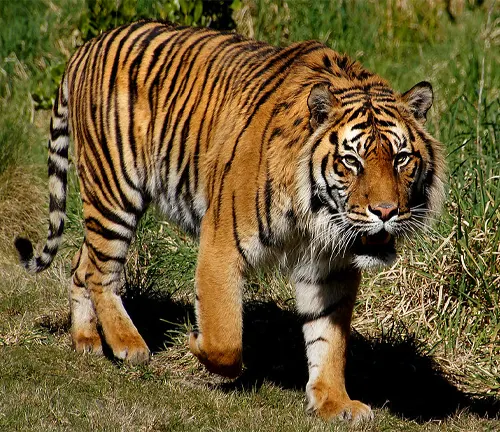
Despite their solitary nature, Sumatran tigers play a vital role in maintaining the balance of their habitat, serving as keystone species within the intricate web of biodiversity. However, their existence is threatened by habitat loss due to deforestation, illegal poaching for the illegal wildlife trade, and human-tiger conflicts. Efforts to conserve this endangered species are underway, with conservation organizations and governmental agencies implementing measures to protect their habitats, combat poaching, and mitigate human-tiger conflicts. As guardians of Sumatra’s forests, the survival of the Sumatran tiger symbolizes not only the resilience of this magnificent species but also the commitment to safeguarding the biodiversity of our planet for future generations.
| Category | Specification |
|---|---|
| Scientific Name | Panthera tigris sumatrae |
| Common Name | Sumatran tiger |
| Habitat | Dense forests, mangrove swamps, rugged terrain |
| Geographic Range | Indonesian island of Sumatra |
| Size | Smaller compared to other tiger subspecies |
| Weight (Adult Male) | Typically 220 to 310 pounds |
| Weight (Adult Female) | Typically 165 to 243 pounds |
| Coat Color | Rich reddish-orange with narrow black stripes |
| Coat Pattern | Unique and distinctive camouflage pattern |
| Physical Features | Bearded and maned appearance due to elongated hair |
| Diet | Deer, wild boar, primates, and other small mammals |
| Hunting Techniques | Ambush tactics, stealthy approach, powerful jaws |
| Social Structure | Solitary, except during mating season and offspring rearing |
| Reproduction | Mating throughout the year, gestation period around 100 days |
| Lifespan | Approximately 10 to 15 years in the wild |
| Conservation Status | Critically endangered |
A Majestic Species in Peril
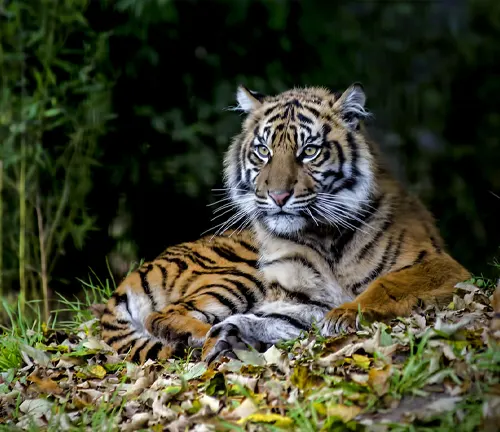
The Sumatran tiger, scientifically known as Panthera tigris sumatrae, stands as a symbol of strength and beauty within the animal kingdom. Endemic to the Indonesian island of Sumatra, this magnificent creature faces numerous challenges that threaten its survival. In this article, we delve into the world of the Sumatran tiger, exploring its habitat, physical characteristics, behavior, conservation status, and interaction with humans.
The Sumatran tiger, one of the smallest tiger subspecies, inhabits the lush tropical forests and peat swamps of Sumatra. It holds a significant place in the ecosystem, playing a vital role in maintaining the balance of its habitat.
Habitat and Distribution
The Sumatran tiger (Panthera tigris sumatrae) inhabits the lush and diverse habitats of the Indonesian island of Sumatra. Its natural habitat encompasses a variety of ecosystems, including dense tropical rainforests, montane forests, mangrove swamps, and rugged terrain. These tigers are well-adapted to the challenging terrain and climatic conditions of Sumatra, where they navigate through dense vegetation and rugged landscapes in search of prey.
In terms of distribution, Sumatran tigers are primarily found on the island of Sumatra, which is located in western Indonesia. Within Sumatra, they are known to inhabit several national parks and protected areas, including Gunung Leuser National Park, Kerinci Seblat National Park, and Bukit Barisan Selatan National Park. These protected areas provide crucial habitat for the survival of Sumatran tigers, offering ample prey resources and shelter from human disturbances.
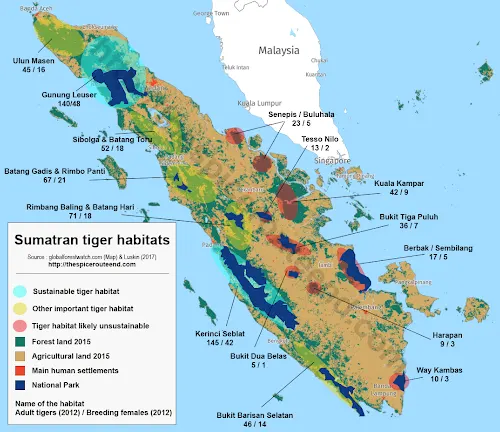
Despite efforts to conserve their habitat, Sumatran tigers face significant threats due to habitat loss and fragmentation caused by deforestation, agricultural expansion, and infrastructure development. Human activities such as logging, palm oil cultivation, and illegal encroachment into protected areas further exacerbate these threats, leading to the decline of tiger populations.
Physical Characteristics
Sumatran tigers exhibit remarkable physical attributes, distinguishing them from other tiger subspecies. They are smaller in size compared to their relatives, with males typically weighing between 220 to 310 pounds and females ranging from 165 to 243 pounds. Their coat features a distinctive pattern of narrow black stripes on a reddish-orange background, providing effective camouflage in their forest habitat. Additionally, Sumatran tigers possess a unique bearded and maned appearance due to the elongated hair around their face and neck.
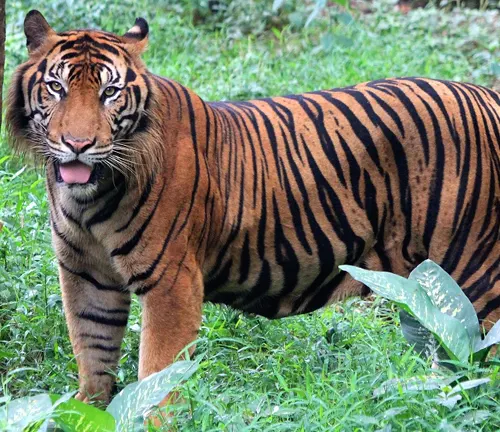


- Size and Weight: Sumatran tigers are the smallest of all tiger subspecies, with adult males typically weighing between 220 to 310 pounds (100 to 140 kilograms) and adult females ranging from 165 to 243 pounds (75 to 110 kilograms).
- Coat Color: Their coat is characterized by a rich reddish-orange background color, which provides effective camouflage in the dense jungle habitats of Sumatra.
- Coat Pattern: Sumatran tigers have a unique and striking coat pattern consisting of narrow black stripes that are closer together compared to other tiger subspecies. This distinct pattern helps them blend into their forest environment and provides camouflage while hunting.
- Facial Features: Sumatran tigers often have a bearded and maned appearance due to the presence of elongated hair around their face and neck. This feature gives them a distinctive and majestic look.
- Body Structure: They have a muscular and powerful build, with strong limbs and a robust body frame adapted for hunting and navigating through dense vegetation.
- Paws and Claws: Sumatran tigers possess large, padded paws with retractable claws, which aid in gripping and climbing. Their sharp claws are essential for capturing and subduing prey.
- Head and Jaw: They have a broad skull and powerful jaws equipped with large canine teeth, enabling them to deliver lethal bites to their prey.
Diet and Hunting
The diet and hunting behavior of the Sumatran tiger (Panthera tigris sumatrae) are integral to its survival as an apex predator in the dense forests of Sumatra. Here’s an overview:
Diet
Sumatran tigers are carnivores, meaning they primarily feed on meat. Their diet consists mainly of large and medium-sized mammals found in their habitat. Some of the key prey species include:

- Deer: Various species of deer, such as sambar deer and muntjac, are important prey for Sumatran tigers.
- Wild Boar: Wild boar are common prey due to their abundance and suitability as food for tigers.
- Primates: Monkeys and other primates are also targeted by Sumatran tigers, particularly in areas where they are prevalent.
- Other Small Mammals: Sumatran tigers may also hunt smaller mammals such as rodents and civets when larger prey is scarce.
Hunting Behavior
Sumatran tigers are skilled and opportunistic hunters, employing a variety of techniques to capture their prey. Some key aspects of their hunting behavior include:
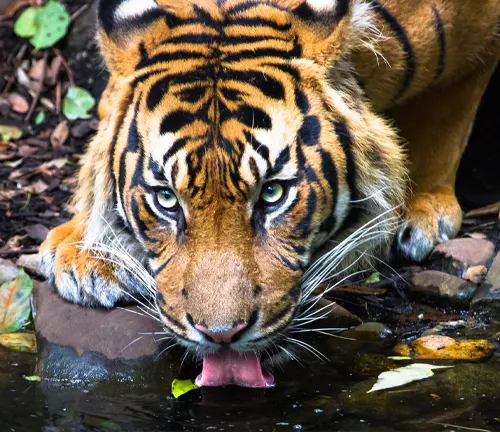
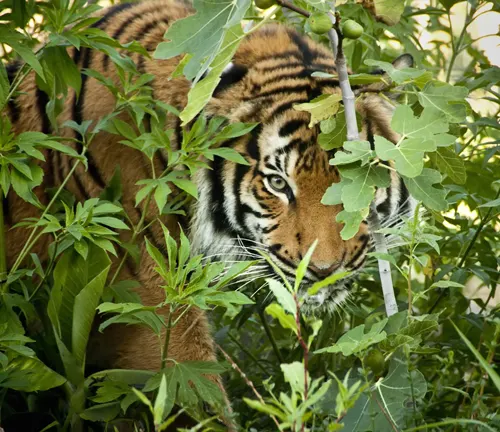
- Ambush Predators: Sumatran tigers often rely on ambush tactics to surprise and overpower their prey. They patiently wait in dense vegetation or concealed areas before launching a sudden attack.
- Stealth and Camouflage: Their distinctive coat pattern provides effective camouflage in the forest environment, allowing them to stalk prey undetected.
- Patience and Persistence: Sumatran tigers are known for their patience and persistence while hunting. They may spend hours or even days tracking prey before making a successful kill.
- Powerful Attack: When the moment is right, Sumatran tigers use their powerful jaws and sharp claws to deliver a lethal bite or swipe, quickly incapacitating their prey.
- Single Predators: Unlike some other big cats, Sumatran tigers typically hunt alone rather than in groups. This solitary hunting behavior allows them to minimize competition and maximize hunting success.
Behavior and Social Structure
Sumatran tigers are solitary creatures, typically avoiding interactions with other individuals except during mating season or when rearing offspring. They establish and defend territories, marking boundaries with scent markings and vocalizations. Despite their solitary nature, they occasionally come together in areas with abundant prey resources.
Solitary Nature
Sumatran tigers are solitary animals, meaning they typically live and hunt alone rather than in groups or packs. This solitary lifestyle is essential for minimizing competition for food and territory within their dense forest habitat. Unlike some other big cats, such as lions, which live in social groups called prides, Sumatran tigers prefer to maintain their independence and autonomy.
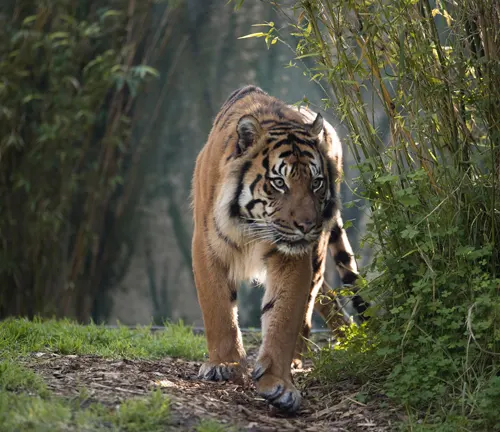
Territorial Behavior
One of the most prominent aspects of the behavior of Sumatran tigers is their territoriality. They establish and defend territories within their home range, which they mark with scent markings, vocalizations, and physical signposts such as scratch marks on trees. These territories can range in size depending on factors such as prey availability and habitat quality.
Territory Marking and Defense
Sumatran tigers use various methods to mark and defend their territories against intruders. They may spray urine, rub their scent glands against trees and rocks, and vocalize loudly to announce their presence and assert dominance. In cases of territorial disputes or encounters with rival tigers, Sumatran tigers may engage in aggressive behaviors such as roaring, growling, and physical confrontations to establish dominance and defend their territory.
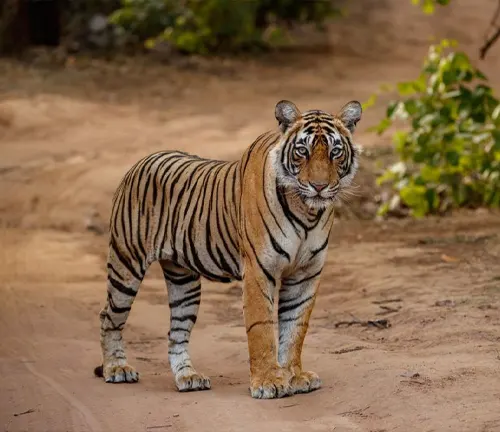
Communication
While Sumatran tigers are primarily solitary, they still engage in communication with other tigers, particularly during the breeding season. They use vocalizations such as roars, growls, and chuffs to communicate with potential mates and rivals. These vocalizations serve to establish territory boundaries, attract mates, and maintain social cohesion within the population.
Reproduction and Lifecycle
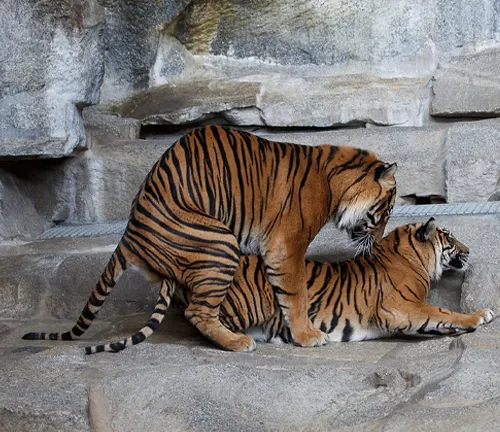
Mating Behavior and Courtship Rituals
Mating behavior plays a crucial role in the reproduction of Sumatran tigers. Courtship rituals involve intricate behaviors such as scent marking, vocalizations, and mutual grooming, which facilitate the bonding between mating pairs and increase reproductive success.
Maternal Care and Cub Rearing
Maternal care is essential for the survival of Sumatran tiger cubs. Female tigers provide dedicated care and protection for their offspring, nursing them with milk, teaching them essential hunting skills, and ensuring their safety until they reach independence.

Dispersal and Establishment of Territory
Dispersal marks a significant milestone in the lifecycle of Sumatran tiger cubs. As they reach adolescence, they leave their natal territory to establish their own territory and seek out potential mates. Dispersal helps maintain genetic diversity within the population and contributes to the survival of the species.
Different Species
The term “Sumatran tiger” typically refers to a specific subspecies of tiger known as Panthera tigris sumatrae, which is native to the Indonesian island of Sumatra.
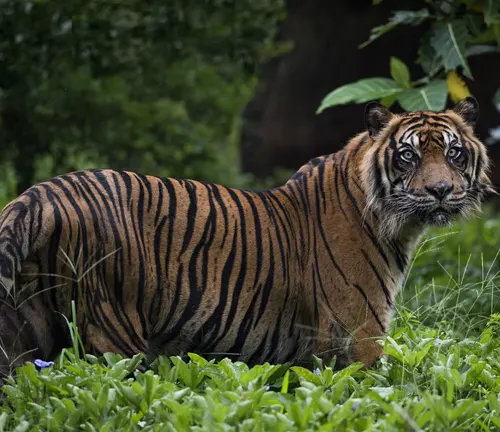
Frequently Asked Question (FAQs)
- What makes the Sumatran tiger different from other tiger species?
The Sumatran tiger is smaller in size compared to other tiger subspecies and has a unique coat pattern with narrow black stripes on a reddish-orange background. - Where do Sumatran tigers live?
Sumatran tigers are found exclusively on the Indonesian island of Sumatra, inhabiting dense forests, mangrove swamps, and rugged terrain. - How big do Sumatran tigers get?
Adult male Sumatran tigers typically weigh between 220 to 310 pounds, while females weigh between 165 to 243 pounds. - What do Sumatran tigers eat?
Sumatran tigers primarily prey upon animals such as deer, wild boar, and primates, although they may also consume smaller mammals and birds. - How do Sumatran tigers hunt?
Sumatran tigers use ambush tactics and stealth to catch their prey, relying on their powerful jaws and sharp claws to swiftly dispatch their targets. - Are Sumatran tigers endangered?
Yes, Sumatran tigers are critically endangered due to habitat loss, illegal poaching, and human-tiger conflicts. - What is the average lifespan of a Sumatran tiger?
In the wild, Sumatran tigers typically live for around 10 to 15 years, although they may live longer in captivity. - Do Sumatran tigers have any natural predators?
Adult Sumatran tigers do not have any natural predators, as they are apex predators within their ecosystem. - How do Sumatran tigers communicate with each other?
Sumatran tigers communicate through vocalizations such as roars, growls, and chuffs, as well as through scent markings to demarcate their territory. - What is the status of Sumatran tiger conservation efforts?
Conservation efforts for Sumatran tigers involve habitat preservation, anti-poaching measures, community engagement, and international cooperation to protect this endangered species. - What role do Sumatran tigers play in their ecosystem?
Sumatran tigers play a crucial role as apex predators, regulating prey populations and maintaining the balance of their ecosystem.














Leave your comment